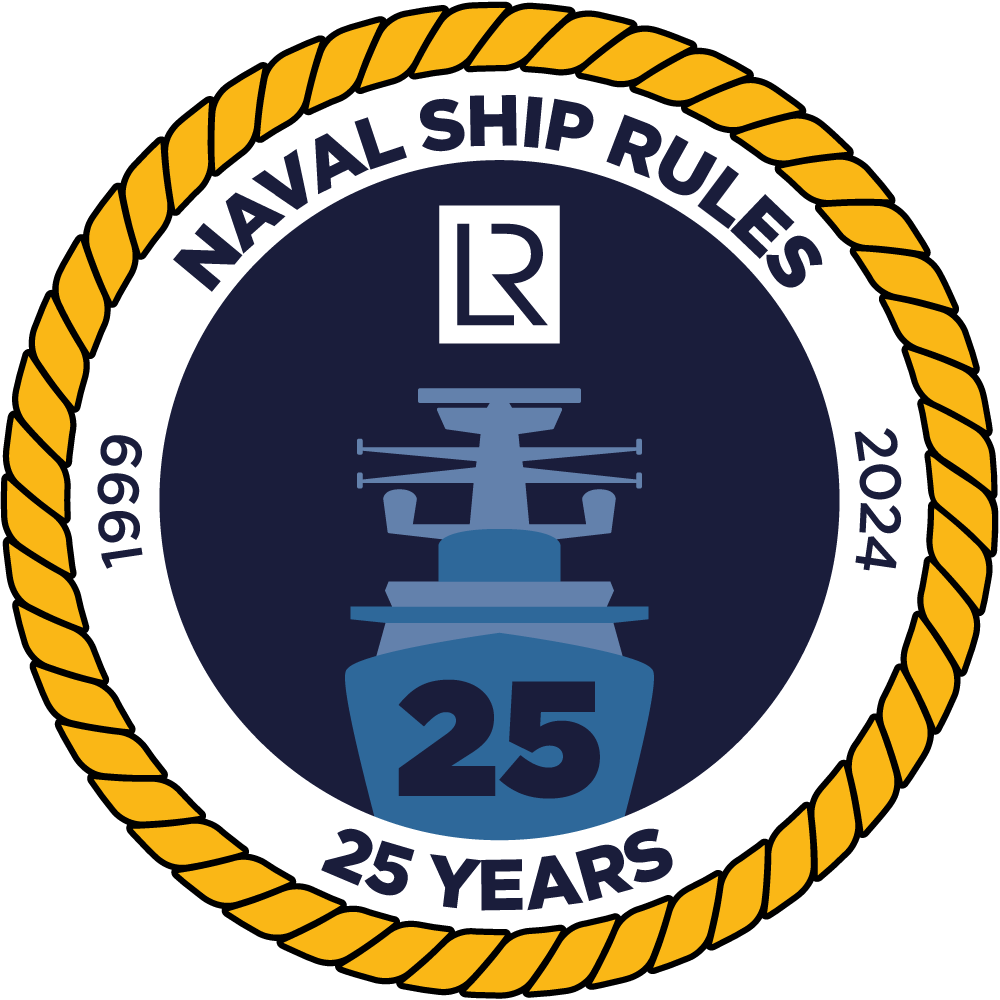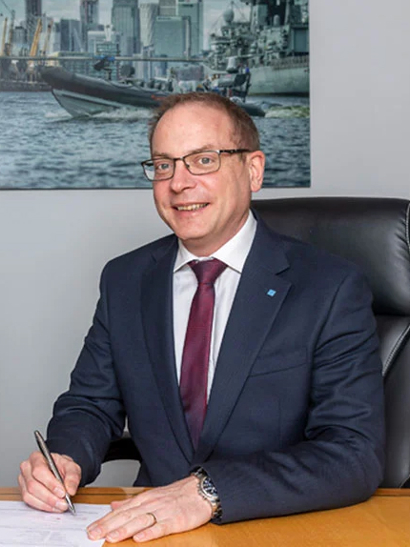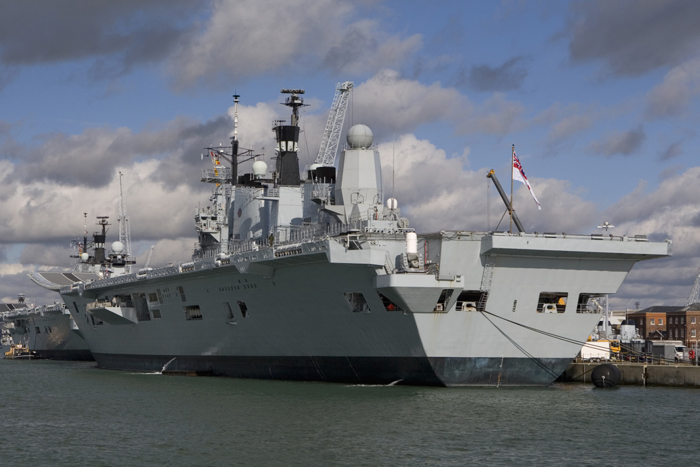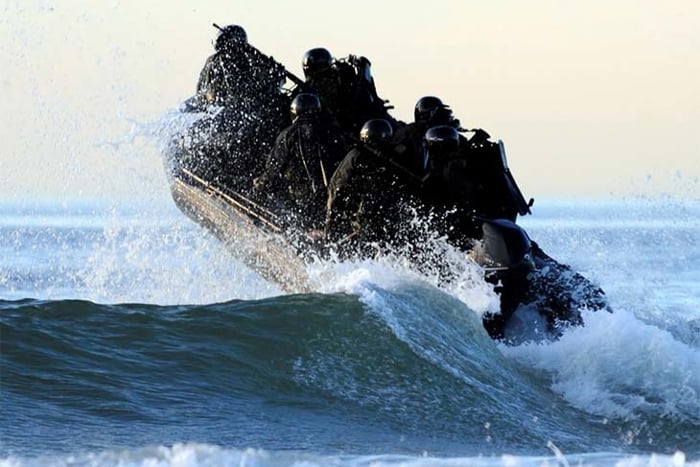During the 1990s, LR was approached by the UK Navy which wanted to see the development of rules applying specifically to naval assets and was contracted by the UK’s Ministry of Defence (MoD) to draft the rules in 1996.
The provisional rules were finalised in 1999, and the first meeting of the Naval Ship Technical Committee took place in October that year. Preparations were put in place for publication of the Rules and Regulations for the Classification of Naval Ships and they were published in January 2000.


Paul James is LR’s Global Fleet Services Director and previously Manager of Naval Classification. He has been involved in LR’s naval business for more than three decades and was instrumental in drafting the Rules through the 1990s. James explains that the Rules were the result not only of the three-year-long MoD contract but of other work carried out by LR experts throughout that decade.
“At that stage, like many other navies around the world, the Royal Navy’s safety system was based on self-assurance – it carried out its own ship surveys and undertook the necessary maintenance and repairs accordingly. And in certain lines of naval business in the UK, such as the submarine fleet, for example, this system of self-assurance continues to this day but with support from LR.”
However, James points out that in the vast majority of naval projects involving new vessels today, Naval Rules will be referenced and a classification society will be mentioned. This illustrates the scale of change over 25 years, he says.
When the Rules and the classification requirements were released in 2000, major UK Navy assets entered into naval class, starting with Type 23 frigates, HMS Lancaster and HMS Richmond. Fourteen other Type 23s subsequently entered naval class followed by aircraft carriers, HMS Ark Royal and HMS Illustrious. By 2004, LR was classing about 50% of the MOD’s ships by tonnage, and 80% by number. Today, most of the UK Navy’s surface vessel fleet is under LR class.
Over the following two decades, LR’s naval business, both with the Royal Navy and a number of other naval clients, has continued to expand. This process was boosted by another key development when the International Naval Safety Association (INSA) was established in 2008.
LR was instrumental in setting up INSA and provides and runs its secretariat today. INSA is often described as the naval version of the International Maritime Organization’s International Convention for the Safety of Life at Sea (SOLAS).
INSA is now supported by 13 navies and seven classification societies and has others interested in joining. Many of the INSA’s navy members now use the ‘Naval Codes’ as they are generally known, as the basis for structuring their own regulatory authorities and applying the framework in whole or in part to their newbuilds, as well as naval ships in service.

Royal Navy business is an important component in LR’s expanding assurance portfolio. But it also provides a range of services to other navies: apart from full classification, LR also carries out surveys and offers advisory and consultancy services.
Countries with naval vessels classed by LR include Australia, Canada, Netherlands, and New Zealand. Other navy-related business is conducted regularly with countries including Chile, Indonesia, New Zealand, and Poland.
And the Rules continue to develop. They are now being adapted to address the implications of new technologies such as batteries and fuel cells. INSA has started to examine ways in which naval ships can meet environmental sustainability targets which, incidentally, sometimes conflict with military requirements.
Speaking to Horizons with his colleague, Naval Business Manager Ian White, James expects to see likely steady growth in LR’s naval business in the coming years for several reasons.
The geopolitical backdrop is one driver. Increased global conflict; more risk; and more military and naval spending.
Several countries, having completed strategic naval reviews, are preparing for large-scale renewal and expansion of their fleets. They may not have the experience or the necessary expertise to attain suitable standards and must therefore turn to third party assurance and certification providers.

A second driver that is gathering pace is the issue of autonomous operation, particularly for smaller vessels. LR’s Grey Boat Code, first published in 2019 and then updated every July, applies to boats of up to 24 metres in length in Government service. It uses statutory Codes published by the UK’s Maritime and Coastguard Agency for baseline standards, adapted by LR’s experience in applying these Codes to boats operated by the MoD.
Many of these craft are deployed, often at high speed, with small crews. They could be rigid inflatable boats (RIBs) on the side of a warship, fast attack craft used by special forces, or reconnaissance vessels. A growing number can be operated autonomously, with far-reaching implications for their design.
They can be smaller, faster, controlled remotely and, increasingly, have scope to become completely autonomous. LR released its Unmanned Systems Code in 2017 and was the first class society to provide safety certification for such vessels.
However, most traditional naval assets will still be required, James believes. Large ships are needed for large-scale personnel movements, heavy machinery, tanks, and so on. Aircraft carriers are still required for air supremacy and geographical reach and navies need submarines for various functions, including defence capabilities. Additionally, small autonomous craft that can be launched at sea are likely to extend the capabilities of such vessels.
So what are the key factors that are driving LR’s expansion in the naval field?
James sums up. “I don’t think they have changed significantly in the 25 years since the Naval Rules were published. They remain resource, engineering skills, and competence. Then there’s access to a wider set of information and technology. Those were the things that caused the Royal Navy to come to us in 1999. They are still the reasons that navies come to us.
“We provide a set of Rules that are flexible. We introduced the ability to tailor requirements (suitably justified) to match changing operating concepts. We put that into the Rules 25 years ago and we have kept this flexibility in place since then.”
This is the first article in a series focusing on LR’s naval business. Subsequent articles will explore its vital role in LR’s portfolio, its evolution in the 21st century, and LR’s plans for future naval innovation.









